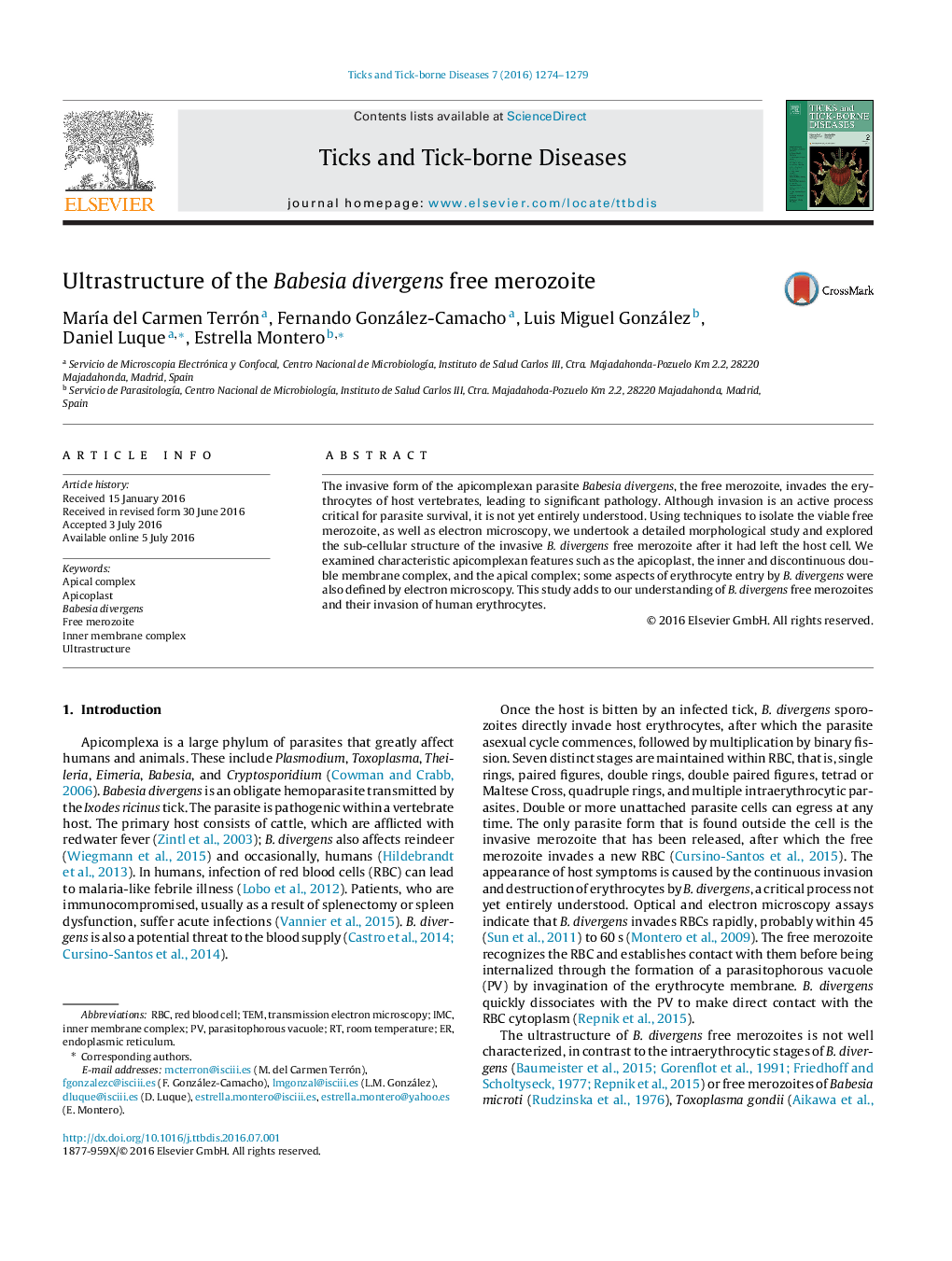| Article ID | Journal | Published Year | Pages | File Type |
|---|---|---|---|---|
| 5546525 | Ticks and Tick-borne Diseases | 2016 | 6 Pages |
â¢This is a morphological study of viable free B. divergens merozoites.â¢The free merozoite was analyzed by transmission electron microscopy.â¢Apicoplast as well as inner membrane and apical complexes were examined in detail.
The invasive form of the apicomplexan parasite Babesia divergens, the free merozoite, invades the erythrocytes of host vertebrates, leading to significant pathology. Although invasion is an active process critical for parasite survival, it is not yet entirely understood. Using techniques to isolate the viable free merozoite, as well as electron microscopy, we undertook a detailed morphological study and explored the sub-cellular structure of the invasive B. divergens free merozoite after it had left the host cell. We examined characteristic apicomplexan features such as the apicoplast, the inner and discontinuous double membrane complex, and the apical complex; some aspects of erythrocyte entry by B. divergens were also defined by electron microscopy. This study adds to our understanding of B. divergens free merozoites and their invasion of human erythrocytes.
